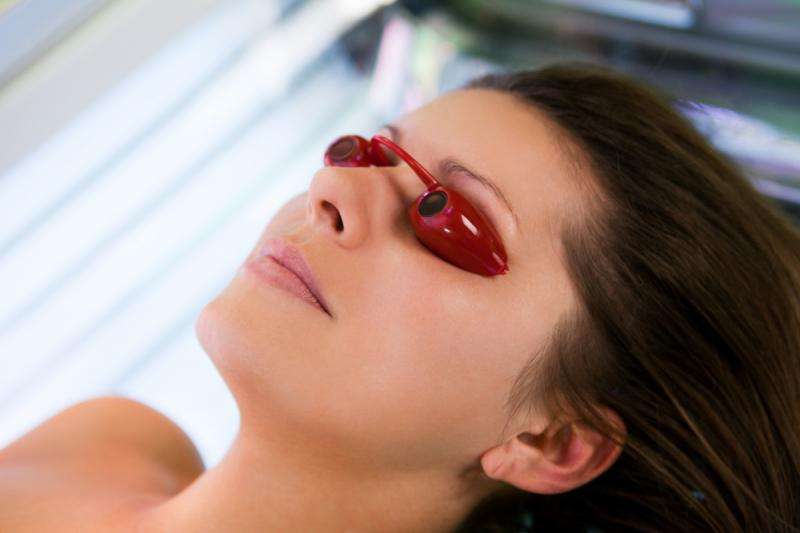More than a third of New Jersey teens who engage in indoor tanning do so frequently, study finds

More than a third of New Jersey high school students who engage in indoor tanning do so frequently and would have a hard time stopping, according to new research from Rutgers Cancer Institute of New Jersey and the university's School of Public Health.
Investigators, whose research "Frequent Indoor Tanning among New Jersey High School Students," appears in the latest edition of the Journal of the American Academy of Dermatology, also found that frequent indoor tanners were more likely to smoke and to engage in social media activities related to indoor tanning.
Indoor tanning – banned commercially in New Jersey in 2013 for those under 17 – exposes users to UV rays which can damage the skin and lead to skin cancer. According to the Centers for Disease Control and Prevention, this practice is particularly dangerous for those who begin indoor tanning in adolescence or early adulthood and puts them at a higher risk of developing melanoma, the deadliest of all skin cancers. Investigators say the results of this current study will provide a necessary basis for assessing the impact of this ban on tanning rates among New Jersey teens.
"Even though a commercial tanning bed ban is now in place for many high schoolers in New Jersey, we have learned from the experiences of other states that this does not entirely eliminate indoor tanning among youth," said Elliot J. Coups, behavioral scientist at the Cancer Institute of New Jersey and associate professor of medicine at Rutgers Robert Wood Johnson Medical School, lead author of the study. "Thus, there is still a need to develop and implement interventions for this population –and for youth across the U.S. – to reduce the likelihood that they will engage in indoor tanning,"
Data for the study were drawn from the 2012 New Jersey Youth Tobacco Survey, which was completed by 1,850 public school students in grades nine through 12 in New Jersey. Although the study primarily focused on tobacco-related issues, the survey also included several questions related to indoor tanning.
Along with providing demographic information pertaining to sex, age and race/ethnicity, survey participants reported whether they were a current smoker, had smoked at least one cigarette in the past 30 days and the number of times they used an indoor tanning booth or bed with tanning lamps.
Those who indicated indoor tanning use in the past year also specified whether they had done so prior to a special occasion, before a vacation or to improve their mood. They also reported whether they had used social media related to indoor tanning salons and how hard it would be for them to stop indoor tanning.
Of the 1,754 students who answered the question about indoor tanning use, 8.5 percent reported taking part in the practice over the prior year. Students who tanned indoors over the past year versus those who did not were more likely to be female (66.1 percent versus 48.4 percent) and current smokers (25.0 percent versus 7.4 percent). Students who reported indoor tanning in the past year did not differ in age than those who did not engage in the practice.
Among students who reported indoor tanning in the past year, 38 percent were 'frequent' indoor tanners(having had 10 or more indoor tanning sessions during that period). Frequent indoor tanning was more common among indoor tanners who were current smokers (57.6 percent frequent tanners), tanned in order to improve their mood (75.2 percent frequent tanners), had used social media related to tanning salons (54.6 percent frequent tanners) or who indicated it would be very hard to stop the practice (90.3 percent frequent indoor tanners).
"Given more than half of frequent tanners are using social media related to indoor tanning, this might serve as a viable mechanism to deliver messaging about the risks of this activity, said Coups. "The higher rate of smoking among frequent tanners also suggests these users may benefit from interventions that address multiple behavioral risk factors."
More information: "Frequent indoor tanning among New Jersey high school students." DOI: dx.doi.org/10.1016/j.jaad.2015.01.035

















